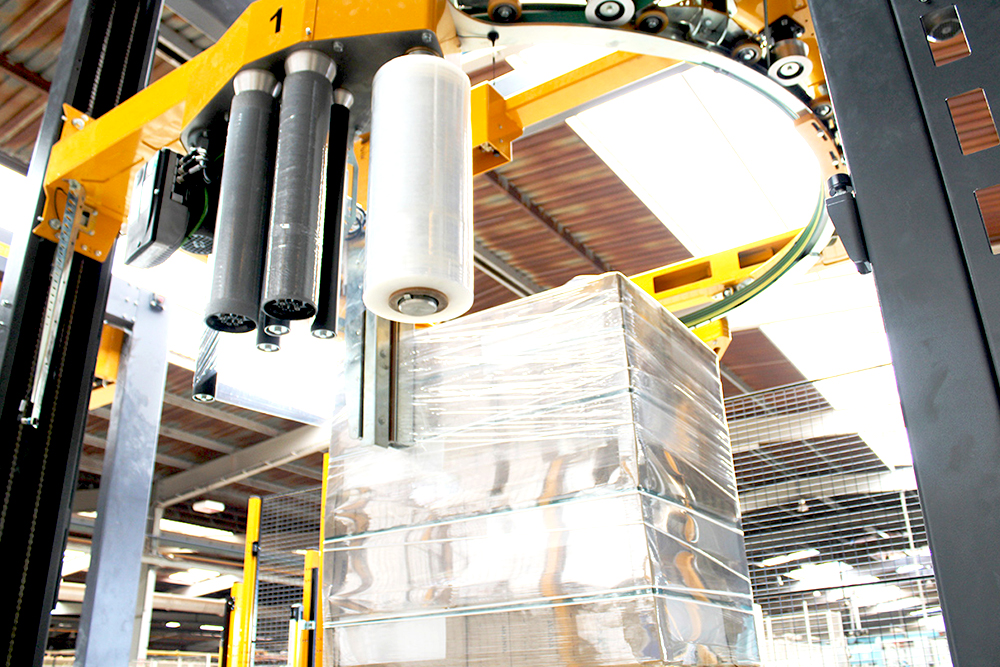As someone who’s in the packaging business, you know the drill—efficiency and product protection are the two pillars that hold up the entire operation. Any bottleneck, any tiny hiccup, can throw a wrench into the best-laid plans.
That’s where stretch wrappers come into play! They wrap goods tightly and neatly, providing optimal protection during transit and storage. At the same time, they boost efficiency by automating a task that would otherwise be time-consuming and labour-intensive. Let’s delve deeper into the world of stretch wrappers and discover how they can revolutionise your packaging process.
Stretch Wrapper Technology: Key Features and Applications
Stretch wrappers are specifically designed to secure and protect palletised loads during storage and transportation by uniformly applying a stretching plastic film around them. This process not only provides a stable, secure, and sealed package, but also minimises the risk of damage due to moisture, dust, or debris. Some of the most popular types of stretch-wrapping machines include:
1. Turntable Stretch Wrappers: These machines feature a rotating platform on which the palletised load is placed and wrapped as it spins. They are ideal for lightweight or low-volume applications and are available in manual or automatic modes.
2. Rotary Arm Stretch Wrappers: Unlike the turntable models, this type of stretch wrapper features a rotating arm that circles around a stationary pallet, applying the stretch film. These machines are well-suited for heavy or unstable loads, typically used in high-volume packaging processes.
3. Orbital or Ring Stretch Wrappers: These specialised machines are designed to wrap horizontally-orientated loads, such as doors, windows, and lumber, providing a secure and streamlined package for easy handling and transportation.
4. Robotic Stretch Wrappers: These self-contained and portable stretch wrapping machines are equipped with robotic technology, providing excellent flexibility and efficiency for businesses with dynamic and evolving production environments.
Maximising Efficiency with Stretch Wrappers
Incorporating a stretch wrapper into your packaging process can yield multiple benefits that contribute directly to the overall efficiency and effectiveness of your operations. Some of the key advantages include:
1. Reduced Labour Costs: Automating the stretch wrapping process reduces the need for manual labour, freeing up valuable staff resources for other crucial tasks in your business.
2. Material Savings: Stretch wrappers are designed to apply film optimally, reducing the amount of material required while ensuring adequate protection. This translates into lower ongoing material costs for your business.
3. Faster Turnaround Times: Stretch wrapping machines greatly speed up the wrapping process, enabling you to meet tight deadlines and customer demands more effectively.
4. Improved Load Stability: Using a stretch wrapper helps to better secure and stabilise palletised loads, reducing the risk of damage or loss during transportation and ensuring that your products arrive in excellent condition.
Selecting the Ideal Stretch Wrapper for Your Business
Finding the right stretch wrapping solution for your specific needs requires careful consideration of several factors:
1. Production Volume: Consider your current and projected production levels to determine the type and size of stretch wrapper that will most effectively meet your demands, both in terms of capacity and speed.
2. Load Size and Types: Assess the dimensions, weight, and stability of the palletised loads in your operation to choose a stretch wrapper that can accommodate these requirements and ensure safe and secure wrapping.
3. Workspace Restrictions: Analyse your current production area to determine if space constraints or other factors may play a role in machine selection, such as the need for a compact or portable model.
4. Budget and Cost Efficiency: Don’t forget to factor in the initial investment costs, as well as ongoing maintenance expenses, to establish the most cost-effective stretch wrapping solution over the long term.
Optimising Your Stretch Wrapping Process
To maximise the benefits of your stretch wrapper and ensure the best results, consider these best practices:
1. Quality and Consistency: Ensure that you use high-quality stretch film and maintain consistency in film tension, overlap, and application to optimise product protection and appearance.
2. Regular Maintenance: Periodic inspections and maintenance will help to prolong the life of your stretch wrapper while minimising downtime and production disruptions.
3. Employee Training: Properly trained operators will not only use your stretch wrapper more effectively and efficiently, but they will also be better equipped to identify and address potential issues before they escalate.
4. Sealing and Protection: For added security and moisture protection, consider incorporating supplementary sealing methods, such as plastic top sheeting or edge protectors, into your wrapping process.
Unleash the Power of Stretch Wrappers for a Competitive Edge
Whoever knew that something as simple as extending the film around the products could become an essential component of a successful and profitable business? Stretch wrappers stand as powerful tools that not only save time, material, and labour costs but also help present and secure products in the best possible way.
By understanding and implementing the right stretch wrapping solution for your business, you can significantly improve efficiency, reduce damage, and boost customer satisfaction. With that in mind, Australian Wrapping Company offers an extensive range of state-of-the-art stretch wrappers and packaging equipment, backed by expert knowledge and support. Contact us today to get started!













